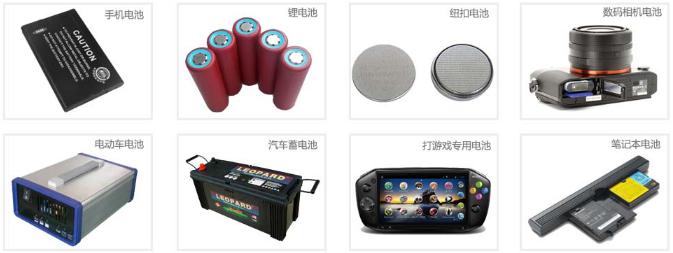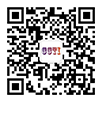INDUSTRY
Battery means a space in a cup, tank or other container or composite container containing an electrolyte solution and a metal electrode to generate electrical current, a device capable of converting chemical energy into electrical energy. It has a positive electrode and a negative electrode. As technology advances, batteries are broadly referred to as small devices that generate electrical energy. Such as solar cells. The performance parameters of the battery mainly include electromotive force, capacity, specific energy and resistance. Using the battery as an energy source, a specific stable voltage, stable current, stable power supply for a long time, and a small current affected by the outside, and the battery structure is simple, portable, and the charging and discharging operation is simple and easy, and is free from external climate and temperature. The impact, stable and reliable performance, plays a huge role in all aspects of modern life.
Battery energy certification service products
Primary battery Normal dry battery, alkaline zinc-manganese battery, lithium manganese battery, zinc-silver battery, zinc-air battery, lithium-iodine battery...
Secondary nickel battery Nickel cadmium battery, nickel hydrogen battery...
Mobile phone lithium battery Lithium ion battery, lithium polymer battery...
Various digital secondary batteries Laptop batteries, digital camera batteries, camera batteries, various cylindrical batteries, wireless communication batteries, portable DVD batteries, CD and MP3 player batteries, tablet batteries, etc...
Lead-acid battery Lead-acid battery for vehicle start-up, fixed lead-acid battery, small valve-regulated sealed lead-acid battery...
Power secondary battery Power battery, electric road vehicle battery, power tool battery, hybrid vehicle battery...

Battery energy certification test standard
Many countries and international organizations in the world have introduced their own lithium battery safety standards and inspection requirements. Several of the more widely used standards are: (For details and questions, please contact the Sentence Testing Battery Division)
IEC 62133 Edition 2.0 (Secondary cells and batteries containing alkaline or other non-acid electrolytes — Safety requirements for portable sealed secondary cells, and for batteries made from them, for use in portable applications);
IEC 61960 Edition 2.0(Secondary cells and batteries containing alkaline or other non-acid electrolytes — Secondary lithium cells and batteries for portable applications);
IEC 60950-1 Edition 1.0 (Information technology equipment — Safety — Part 1: General requirements);
IEC 60086-4:2007 (Primary batteries – Part 4: Safety of lithium batteries);
UL 1642 Ed 4 (Lithium Batteries);
UL 2054 Ed 2 (Household and Commercial Batteries);
UN ST/SG/AC.10/11 Rev.5/Amend.2 Section 38.3Dangerous Goods Cargo Recommendation - Test and Standards Manual(Recommendations on the Transport of Dangerous Goods (Recommendations on the Transport of Dangerous Goods — Manual of Tests and Criteria, Rev.5/Amend.2 Edition);
GB/T 18287-2013 General Specification for Lithium Ion Batteries and Battery Packs for Mobile Phones;
JIS C 8714:2007 "Safety test of battery cells of lithium-ion batteries for portable electronic devices;
The above major lithium battery standards have examined the safety and electrical performance of lithium batteries from different perspectives. They will be classified as follows:
|
Testing methods and technical requirements corresponding standards |
Product safety |
Environmental adaptability
|
Electrical performance
|
|
|
Batteries |
battery |
|||
|
GB/T 18287 |
Heavy impact
|
1. Overcharge protection
|
1.ESD (electrostatic discharge)
|
1.0.2C5A discharge
|
|
IEC 62133 |
1. Continuous charging
|
External short circuit
|
Free fall
|
/ |
|
IEC 61960 |
/ |
/ |
/ |
1.20 ° C discharge
|
|
IEC 60086-4 (GB8897-4) |
External short circuit
|
External short circuit
|
Low pressure
|
/ |
|
UN ST/SG/AC.10/11 Rev.5/Amend.2 Section 38.3 |
External short circuit
|
External short circuit
|
Low pressure
|
/ |
|
UL 1642 |
External short circuit
|
External short circuit
|
Vibration
|
/ |
|
UL 2054 |
External short circuit
|
External short circuit
|
Vibration
|
/
|
|
JIS C 8714 |
External short circuit
|
External short circuit
|
Thermal shock
|
/
|
As can be seen from the above table, the current standards of lithium batteries mainly investigate the electrical and safety performance of lithium batteries from three perspectives:
1. Product safety;
2. Environmental adaptability;
3. Electrical performance.
Different standards have different emphasis on battery testing:
IEC 61960 mainly focuses on the electrical performance test of lithium batteries;
IEC 62133 and Japan JIS C 8714 require a focus on product safety and environmentally adaptive safety;
GB/T 18287 not only includes some safety testing items, but also covers performance testing;
UL 2054 and UL 1642 comprehensively examine the safety of batteries and batteries under various operating conditions, including fault conditions, heavy pressure conditions, and combustion conditions.
As a new independent third-party testing organization, Shenzhen CCTI Technology Co., LTD. has internationally recognized laboratories and experienced engineers to help manufacturers ensure that their products comply with all relevant regulations and technical requirements. We can provide global one-stop testing and certification services for most companies.








